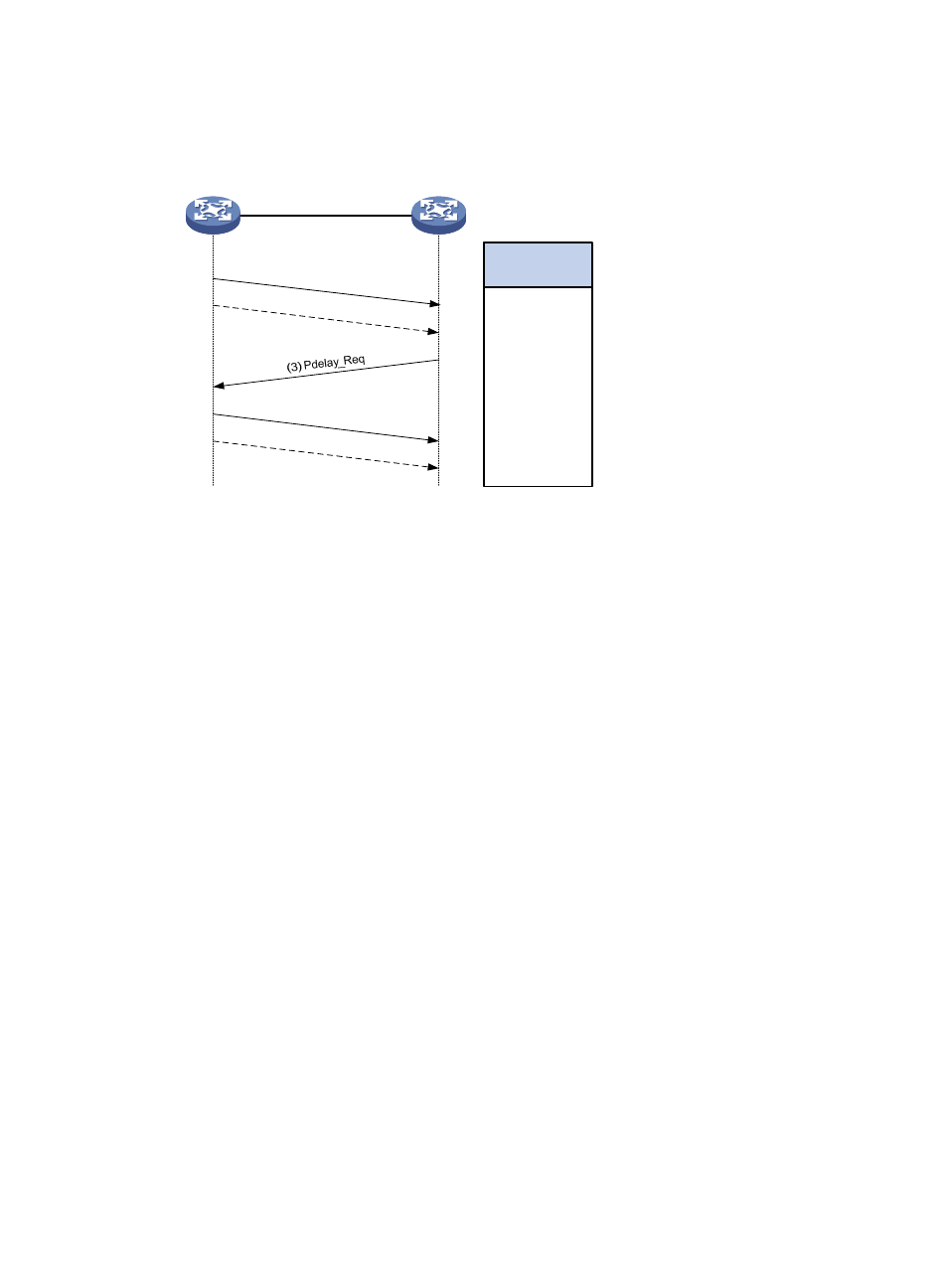Peer delay – H3C Technologies H3C S6300 Series Switches User Manual
Page 69

56
Peer Delay
Figure 21 Operation procedure of the Peer Delay mechanism
The Peer Delay mechanism uses Pdelay messages to calculate link delay, which applies to only
point-to-point delay measurement.
shows an example of the Peer Delay mechanism by using
the two-step mode.
1.
The master clock sends a Sync message to the member clock, and records the sending time t1.
Upon receiving the message, the member clock records the receiving time t2.
2.
After sending the Sync message, the master clock sends a Follow_Up message carrying time t1
immediately.
3.
The member clock sends a Pdelay_Req message to calculate the transmission delay in the reverse
direction, and records the sending time t3. Upon receiving the message, the master clock records
the receiving time t4.
4.
The master clock returns a Pdelay_Resp message carrying time t4, and records the sending time t5.
Upon receiving the message, the member clock records the receiving time t6.
5.
After sending the Pdelay_Resp message, the master clock sends a Pdelay_Resp_Follow_Up
message carrying time t5 immediately.
From the above process, the member clock collects six timestamps, t1 to t6, and obtains the round-trip
delay to the master clock by using the following calculation:
•
[(t4 – t3) + (t6 – t5)]
The member clock also obtains the one-way delay by using the following calculation:
•
[(t4 – t3) + (t6 – t5)] / 2
The offset between the member and master clocks is as follows:
•
(t2 – t1) – [(t4 – t3) + (t6 – t5)] / 2
Depending on whether to send Follow_Up messages, the Peer Delay mechanism includes two modes:
single-step and two-step.
•
In single-step mode, t1 is carried in the Sync message, and no Follow_Up message is sent. The
offset between t5 and t4 is carried in the Pdelay_Resp message, and no Pdelay_Resp_Follow_Up
message is sent.
Master clock
Member clock
(1) Sync
(2) Follow_Up
(4) Pdelay_Resp
t1
t2
t3
t4
Timestamps
known by
member clock
t2
t1, t2
t1, t2, t3
t1, t2, t3, t4, t6
(5) Pdelay_Resp
_Follow_Up
t5
t6
t1, t2, t3, t4, t5, t6
